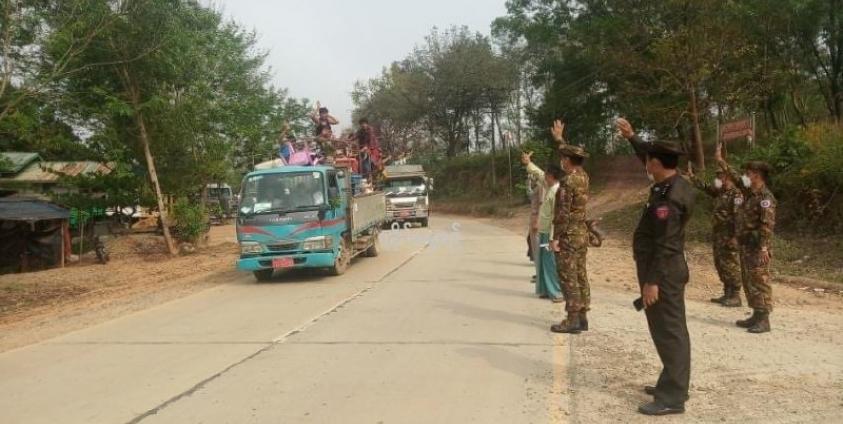The Military Council has reopened some roads and waterways that have been blocked for months due to regional unrest in Rakhine State, but residents told Than Lwin Times that the situation is not yet safe under the monitoring period.
Due to resumed clashes between the Arakan Army (AA) and junta army, the Military Council has blocked some roads and waterways in Rakhine State for months, and, after the two sides agreed to a temporary ceasefire on November 26, some roads were reopened.
Recently, the military council has reopened the roads to Yathaedaung, Buthidaung, the Yangon-Sittwe highway, and Sittwe-Ponnagyun-Kyauktaw- Mrauk U in Rakhine State.
Some roads have been reopened, but most people are still keeping a close eye on circumstances because both sides are still monitoring the situation, according to a source who is assisting the refugees.
Although the roads have been opened, the displaced are currently finding it difficult to return home, and the military council has yet to announce whether it will ease the travel ban on international and domestic organizations, including the United Nations, which are helping refugees.
Some of the highways have been reopened, but most people are still keeping a close eye on circumstances because both sides are still monitoring the situation, a source said.
The Shwe Pyi Tan Express Vessels, which have been suspended for more than two months, have announced that the vessels in Sittwe, Rathedaung and Buthidaung Townships will resume on November 28.
U Khaing Thukha, the spokesperson of the Arakan Army (AA), said that a ceasefire agreement was reached through meditation to help the people of Rakhine and solve the difficulties they are currently facing.
The local residents said that they are hoping for relief teams to go to Buthidaung, Maungdaw, Rathedaung, Mrauk-U, Minpya, Myebon, and Kyauktaw Townships, which are closed to UN groups and local and foreign organizations.
Many civilians were killed during the resurgent fighting in Rakhine, and the local people faced difficulties from all sides as a result of the military council’s four-cut strategy.







